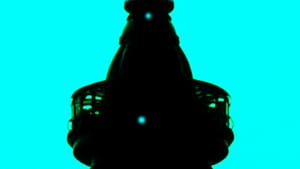Stay in the Loop
BSR publishes on a weekly schedule, with an email newsletter every Wednesday and Thursday morning. There’s no paywall, and subscribing is always free.
If Billy went away
Public art in Philadelphia

I was too young to remember the trip to see William Penn’s statue in its final days.
It was the late 1950s, and my mother, concerned that urban development would sweep Billy off his pedestal, took my brother, sister, several cousins, and myself for a last elevator ride to the top of City Hall.
In the 1960s, I do remember family afternoons to see sculpture along the Parkway, particularly The Thinker, where we spent less time looking at Rodin and more time posing ourselves as serious thinkers for my mother’s camera.
Of course, as it turns out, Billy was not removed. Instead, he was surpassed in height by new skyscrapers. And, although The Thinker still sits on the Parkway, he is supplanted in importance — at least for the picture-taking-mimicking — by Rocky.
Public art, like art in our homes, falls to the background of everyday living until its presence is threatened. I receive letters from prisoners recalling their childhood hanging in Center City, Fairmount, or South Philly. As Reggie writes from his permanent prison cell, “Philadelphia is art!”
Who selects the art?
 It isn’t Reggie’s letter that evokes my curiosity about public art of Philadelphia, but rather the collection at the Cleveland Clinic. On that trip, I imagined Leonard Baskin’s sculpture at Society Hill Towers as the preferred artwork in time of need, not the prescribed calmness of hospital’s art.
It isn’t Reggie’s letter that evokes my curiosity about public art of Philadelphia, but rather the collection at the Cleveland Clinic. On that trip, I imagined Leonard Baskin’s sculpture at Society Hill Towers as the preferred artwork in time of need, not the prescribed calmness of hospital’s art.
Is public art, like hospital art, subjected to a committee’s decision as to what is visually best for an entire city and me? Hoping to learn the mission for Philadelphia’s public art, I emailed the city government. My questions included what is the city’s working definition of art? What are the guidelines for selecting art? And who selects the art?
I was directed to the Philadelphia Home Rule Charter, which consists of a hodgepodge of legalese. I also find good directories to public artworks in Philadelphia (see here and here, for instance). My own interest, however, is not what exists but what does it mean to exist as art in the public realm — how does art exist as such?
And who decides where it goes?
Physical art demands a home, and the physical demands of public art become metaphoric in mirroring the individual’s need in establishing a place of home. Thus, location becomes crucial and is often a source of contention, mimicking other city realities.
The All Wars Memorial to Colored Soldiers and Sailors monument was erected in West Fairmount Park in 1934, relegated to the park because it was anticipated that there would be problems in presenting six blacks in a more prominent place. In 1994, the monument was moved to Logan Square.
Location is ontological; it has the potential in defining that a work of art is indeed art. At Pennsylvania Academy of Fine Arts, a crashed airplane takes over the courtyard between the museum and school buildings. This same airplane located a block north, perhaps at a restaurant, could be a marketing gimmick to attract diners. Several miles south, at the airport, it suggests an unfortunate accident. In these latter locations, the airplane’s function changes, but its identity remains the same — it is an airplane. In its location between the school and the museum, though, a more significant ontological transformation takes place where airplane is no longer airplane; it is art.
While location has power in establishing something as art, there is,  of course, another power behind this designation of location. What or who has that relegating strength?
of course, another power behind this designation of location. What or who has that relegating strength?
A public embarrassment
I am reminded of a conversation with a board member of the Philadelphia Museum of Art. In explaining the power of the museum in determining art, this board member proclaimed, “The museum is in charge of selecting great art and all the other stuff — well, all that stuff goes wherever that stuff goes.” Confused, I asked, “Like keeping the Rocky statue in front of the museum as representing great art?” The board member cringed but offered no response.
Remembering a PAFA instructor who suggested that students should hang their weakest art on their studio walls, since more can be learned from weaknesses than from strengths, I wonder, what does the museum want me to learn from this bronze, which embarrasses its own board members?
French philosopher Jean-Luc Marion describes great art as a saturated phenomenon. He’s talking about an excess in the artwork that overwhelms our ability to comprehend it; a mysterious remainder that cannot be calculated into our knowledge or experience. This excess keeps us bound in relationship to the piece, taking us beyond ourselves.
The pull of the abyss
Consider the Armenian monument on the side-front lawn of the art museum. In its high to low relief and multiple surfaces, it reflects the complexity of a genocide narrative that will not be boiled down to simplistic terms. In the alchemy of materials, forms, and presentation of imagery, it invades the viewer’s space,  creating the unbalanced equation of a single viewer against the abyss — like all great art. Yet, the viewer need not know anything of its genocide subject to experience the pull of this abyss.
creating the unbalanced equation of a single viewer against the abyss — like all great art. Yet, the viewer need not know anything of its genocide subject to experience the pull of this abyss.
Rocky presents a different kind of equation, one so balanced an accountant would be pleased. What the viewer gets from the statue equals what the viewer knows about the story — our city, our street, and so on. Rocky’s value does not stand outside the story. Because Rocky’s value is equal to what we know about it, Rocky can only give us a gluttony fulfillment of the same — ourselves.
One can only wonder if the Blues Brothers ran up the museum steps. Would the plaster sculptures of John and Dan in front of Mr. Barstool at Third and Race Streets get transported to the museum, keeping Rocky company in his representative role of great art?
Thus, we’re left with more questions: Does public art actually function outside of art? And what is Billy doing up there up on his pedestal?
For further thoughts on public art by the author, click here.
Photos, top to bottom: the Rodin Museum; the Armenian Monument; the Blues Brothers. All by the author.
Sign up for our newsletter
All of the week's new articles, all in one place. Sign up for the free weekly BSR newsletters, and don't miss a conversation.
 Treacy Ziegler
Treacy Ziegler